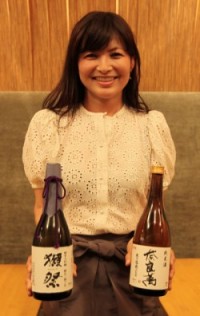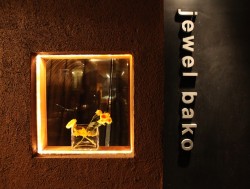Interview: Junko Igarashi, Sake Sommelier
I recently had the opportunity to speak with Junko Igarashi who is a sake sommelier at Jewel Bako restaurant in New York City’s East Village. I wanted to ask Junko, from her unique perspective as a sake sommelier, regarding her feelings about all things sake.

Junko Igarashi
Junko Igarashi:
My grandfather owned a small sake shop in Japan. It’s not existing anymore but when I was young I visited my grandparents in the countryside and I liked to hang out in his store watching the bottles and the beautiful labels with all their different colors. I also enjoyed the smells of sake when the adults did tastings. I didn’t have any relationship to sake until I started working in restaurants when I moved to the USA. Now, as an adult, when I see some sakes, it is kind of a flashback experience for me. I look at some bottles or labels and I think – Hey, I know this! It takes me back to my childhood.Timothy Sullivan: Tell me about your sake work at Jewel Bako. What is a typical evening like for you here? What are your duties?
Junko Igarashi: I recommend sake of course! A lot of people here know a little bit about sake, but not much. Other people say, “Oh I’ve tried this and I want something similar”. And let’s say they tried Wakatake at some other place and wanted something similar. I would try to recommend something like that.
Timothy Sullivan: Would you say most of the customers you’re serving have had exposure to sake before?
Junko Igarashi: Most of them are beginners and they have a little bit of knowledge about sake, but they sometimes need some help. More than half of the people don’t know what they want to order so, I try to recommend the sake for them. Sometimes I give them a small taste to make sure what I’m recommending suits their palate. Everybody has different tastes so I think having a taste is the best way to ensure a good recommendation

Jewel Bako
Junko Igarashi:
A lot of customers who come into the restaurant know a lot about wine and fish, so they have good palates, but I want to help our customers develop their knowledge of sake. I want those people to understand how wonderful sake can be. If people understand wine, then I think they can understand sake. For example, there are people who know about daiginjo sake, and I want to introduce them to yamahai or to a new style like sparkling sake. I want show people that sake has many different styles and varieties.Timothy Sullivan: Have you noticed any sake trends with your customers?
Junko Igarashi: Yes. When I started here about six years ago, Niigata style of sake was very popular. Such as Kubota or Hakkaisan. But now seasonal nama sake is very popular. People are asking me – do you have seasonal Nama? Currently we have 95% American clients, and usually 5% Japanese clients. Their tastes are different. American people tend to want to start the meal with something sparkling so more and more they are asking me about sparkling sake.
Timothy Sullivan: What do you do when you get people who come in and say “I’m a total beginner don’t know where to start… what you recommend?”
Junko Igarashi: I will give them two styles of sake to taste; one perhaps a very floral daiginjo and another such as a full-bodied junmai style sake. A lot of people ask me for dry but then they pick a sweeter sake. I think it’s important to taste. I give them a taste of two different styles such as honjozo and daiginjo. I explain the sakes that they are tasting and then let them decide.
Timothy Sullivan: what are some of the core food pairings that you recommend here at Jewel Bako?
Junko Igarashi: We have a fresh octopus sashimi with green tea salt and yuzu. I recommend pairing this with a clean ginjo sake. We also have fatty tuna or a yellowtail belly. Those I pair with a sake with more acidity. For example Kagatobi Junmai Ginjo. When the chef makes Omakase, he always makes seared anago and I want to pair that with a high-quality daiginjo such as Dassai 23. Of course, we aslo have some misoyaki which is very rich and I recommend a pairing with naraman muroka junmai. It’s delicious!
Timothy Sullivan: Thank you very much for taking the time today!


